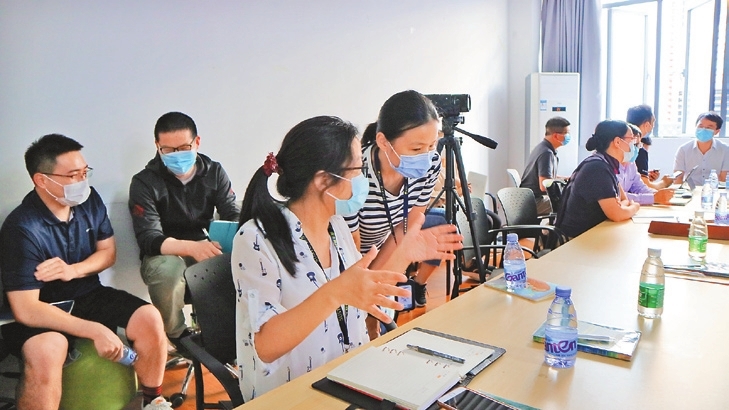
Dr. Yan Wei, Matthew Jellick Teaching encompasses more than the transmission of knowledge from teachers to students, as within a classroom, there should be a cohesive learning environment whereby information is shared, analyzed, and discussed as a group, not as individuals. In respecting teaching as an art, we place value on not only what is being taught, but more importantly, how and why it is being taught. This semester at SUSTech, the Department of Mechanical and Energy Engineering teamed up with the Center for Language Education for a series of three seminars, titled, “Engineering Teaching Development Series.” Initiated and supported by Professor Rong Yiming and Dr. Li Yuan, the focus included topics on “Inspired Teaching,” “Teaching Through Expression” and “Interactive Teaching,” all notions which give credence to the power of teaching and how the teacher acts as a conduit of information flow, a facilitator in the classroom of learners, not necessarily a director. Dr. Yan Wei, who spent last semester at MIT, integrating herself in the course, “Project Engineering Processes,” was able to see learning from the student’s viewpoint, where they acquired strategies and methods for successful design innovation. Working in large teams, the students designed and built working alpha prototypes of new products. As part of the process, these teams had to identify significant product opportunities and then design solutions through the construction of high-quality models — from sketches to prototypes. Most importantly though, the students had to develop an appreciation for the nontechnical aspects such as group dynamics, team roles and management, consensus building, and the value of communication, which are all prerequisites for successful technical innovation. The instructor of the MIT course, Professor David Wallace, is known for his innovative, engaging, and active class exercises, and has been featured in articles on education in The New York Times and Science Magazine. With these experiences at MIT, coupled with the recent teaching development workshops at SUSTech, Dr. Yan realized that the overall teaching philosophy involved in providing students with a motivating and confidence-building learning environment is an understanding of both what and how the instructor teaches. The most important element in design education is inspired teaching, and how passion is transmitted from the instructors to the students. With this mindset implemented, the class will be organized in ways which students will be engaged in the topics they are learning, not just mere recipients of information. This collaboration between universities, departments, and teachers is an effective way for continuous improvement in education, not only as it applies to Engineering specifically, but for the lager realm of all STEM-related disciplines. Using the “Language of Teaching,” the Center for Language Education at SUSTech envisions continued partnerships across campus where ideas pertaining to “Inspired Teaching” are shared for the continued development of both teachers and students, and where learning is lifelong and worldwide. | 
